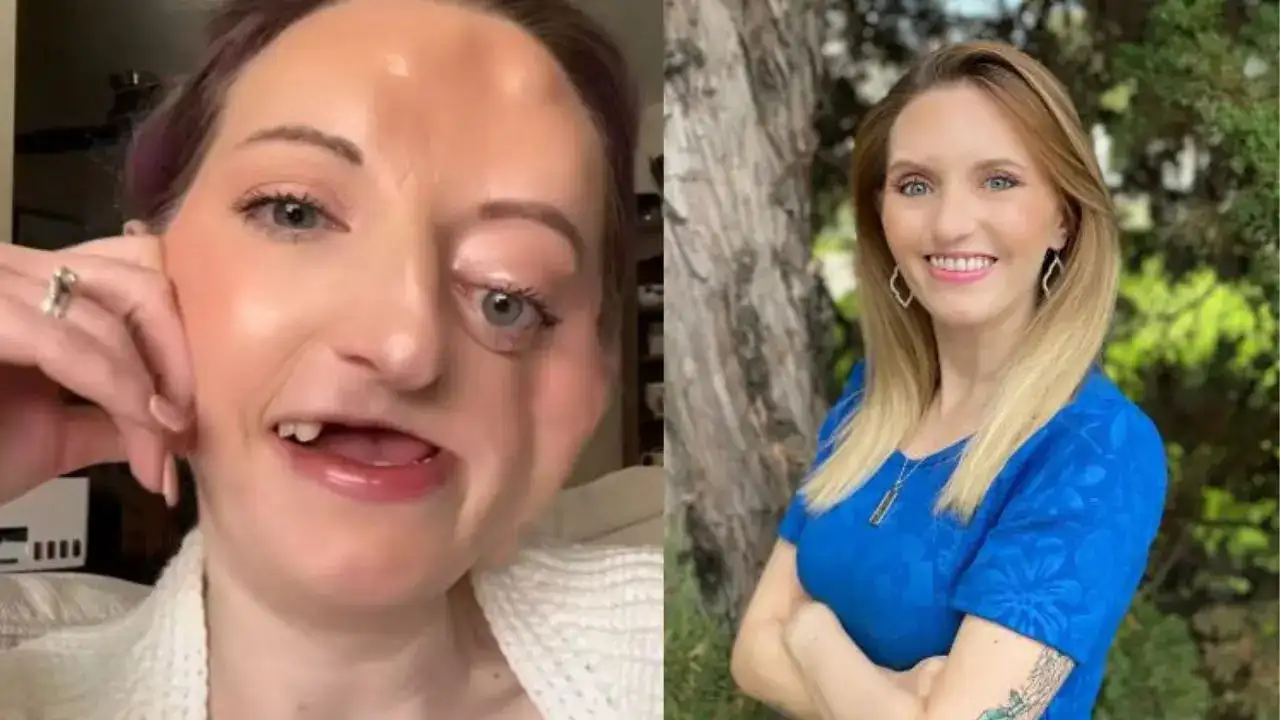
Nicole’s ordeal began with seemingly innocuous symptoms – a dull tooth and jaw pain that did not go away
For Nicole Kowalski-Kleinsasser, her first brush with a nagging toothache was passed off by doctors as a run-of-the-mill sinus infection. However, she had no idea that the pain and discomfort were a sign of something more sinister.
The 25-year-old was later diagnosed with an aggressive cancer that eventually took her smile, half of her face, and - years later - her life. Nicole’s ordeal began with seemingly innocuous symptoms—a dull tooth and jaw pain that did not go away. At first, dentists and doctors could not find anything wrong. Nicole, a resident of Nevada in the US, was told it was either a muscle strain or a sinus infection and was then prescribed antibiotics.
Later, dental X-rays revealed some bone loss in her jaw.
She then got a biopsy done near a molar along with a painful tooth removal. “I’ve never felt pain like that in my life,” she said in a viral TikTok video. “I could feel every single thing that he was doing," she said. Doctors found a tumour and, after some more tests, confirmed salivary gland cancer.
After undergoing a month of radiotherapy, which she described as “next-level painful,” she got fitted with a prosthesis known as an obturator to close the hole in her mouth and help her speak, eat, and drink. Nicole said she recovered from surgery, but the pain was constant. Her teeth began shifting, which she found deeply distressing. “I lost my smile,” she said. “I’ve had this smile all my life. And it’s just gone. It was a really devastating experience to have that happen, to have them shift like that.”
Doctors said it happened due to necrosis - the death of tissue. Later another biopsy was done, which revealed the cancer had returned, forcing Nicole to undergo another operation to remove more of her mouth and seven teeth. However, two years later her cancer returned, and this time doctors had to remove part of the outside of her face and rebuild it with skin grafts from her leg.
What is salivary gland cancer?
Salivary gland cancer describes malignant tumours that affect your salivary glands, located in your mouth and throat. They produce saliva, or spit, that helps your digestive system begin breaking down food. Salivary gland tumours may be benign, noncancerous, or malignant—cancerous. Both types may affect any of your salivary glands.
Salivary cancer is rare, as only 1 per cent of tumours affect your head and neck. The most common types of salivary gland cancer are mucoepidermoid carcinoma and adenoid cystic carcinoma. Together, they make up half of all malignant salivary gland tumours.
What are the risk factors for salivary gland cancer?
Anyone can develop salivary gland cancer, but men are more likely to have malignant salivary gland tumours. You are also more likely to develop cancer in a salivary gland if you:
- Are 55 years or older
- Smoke or use alcohol frequently
- Have received radiation therapy to your head or neck
- Work in certain occupations, including plumbing, rubber products manufacturing, asbestos mining, and leatherwork
